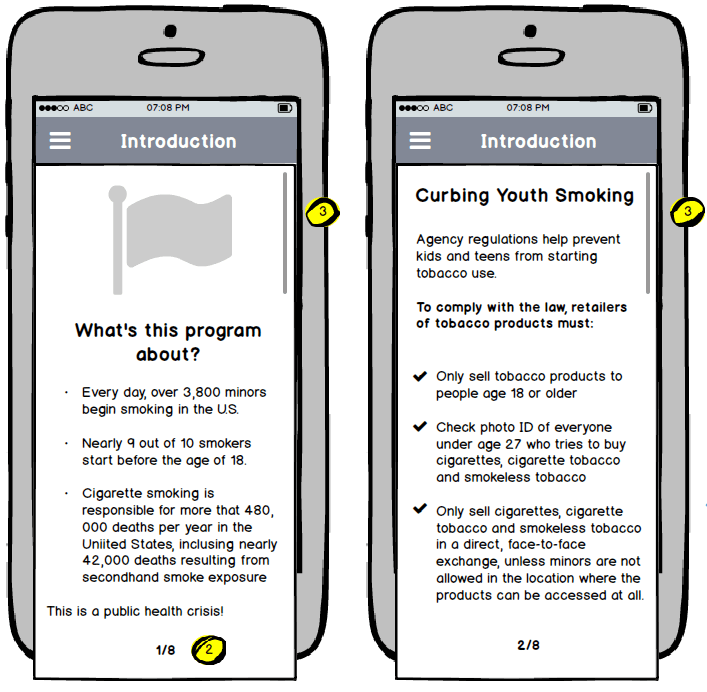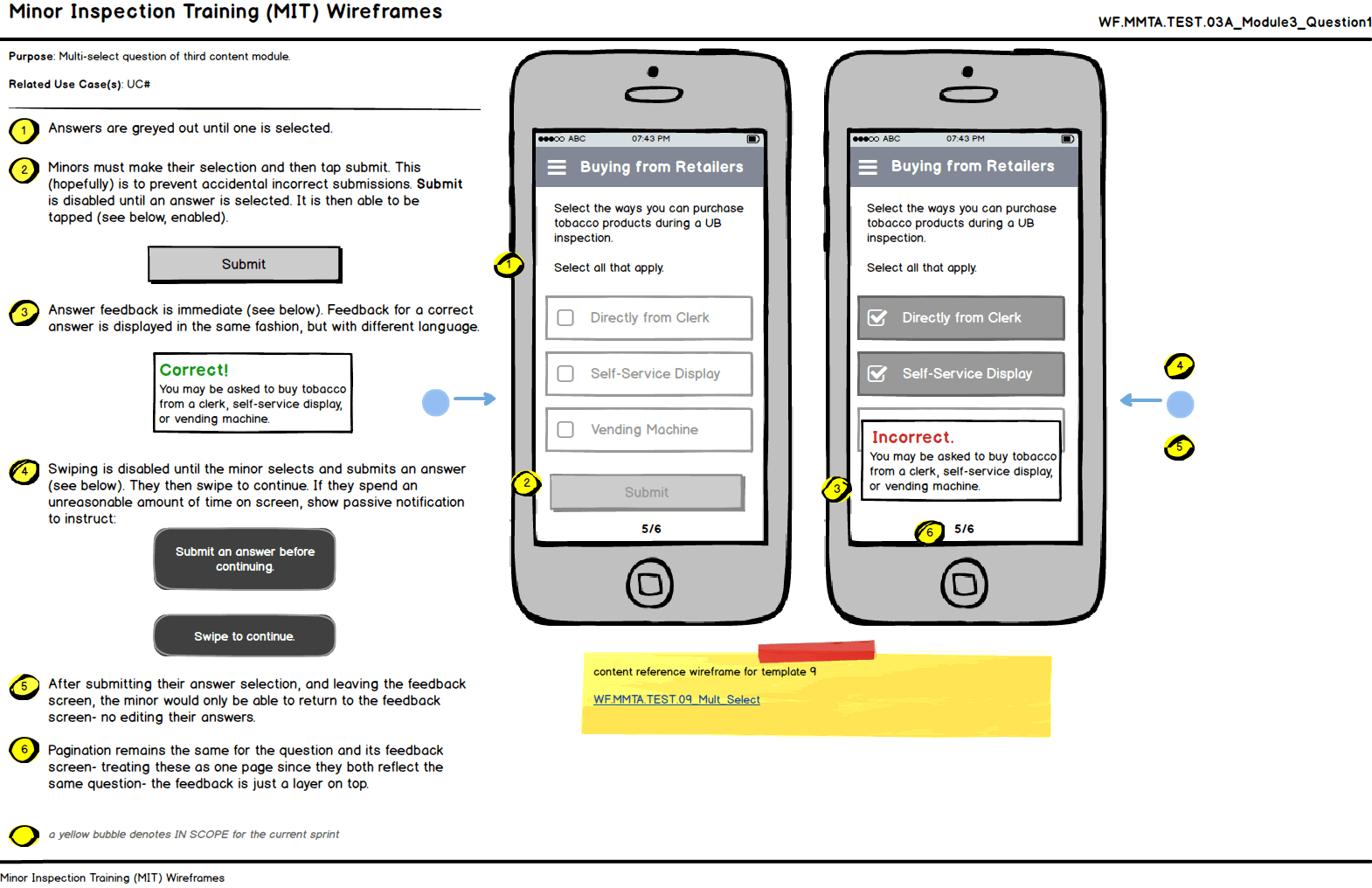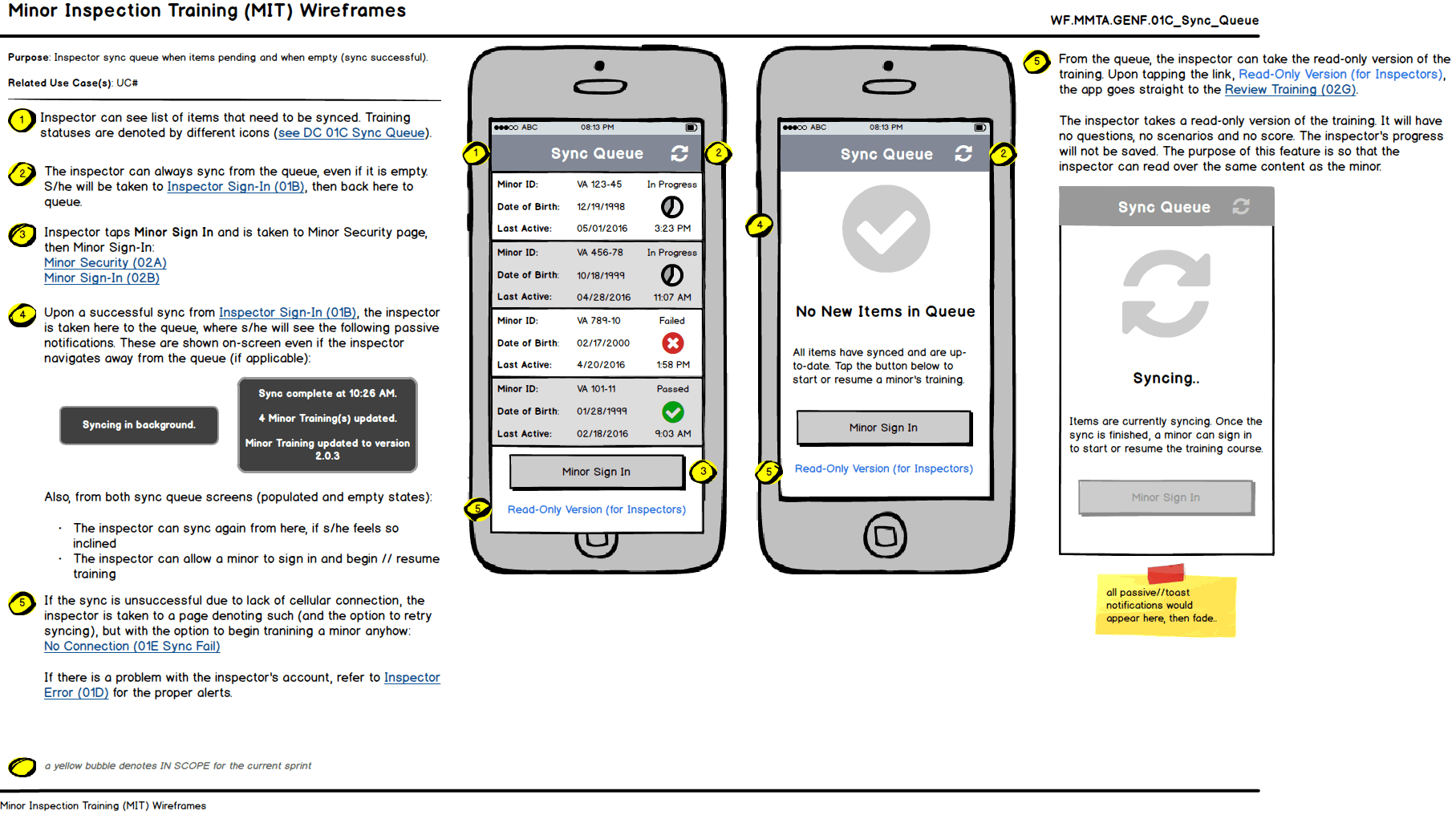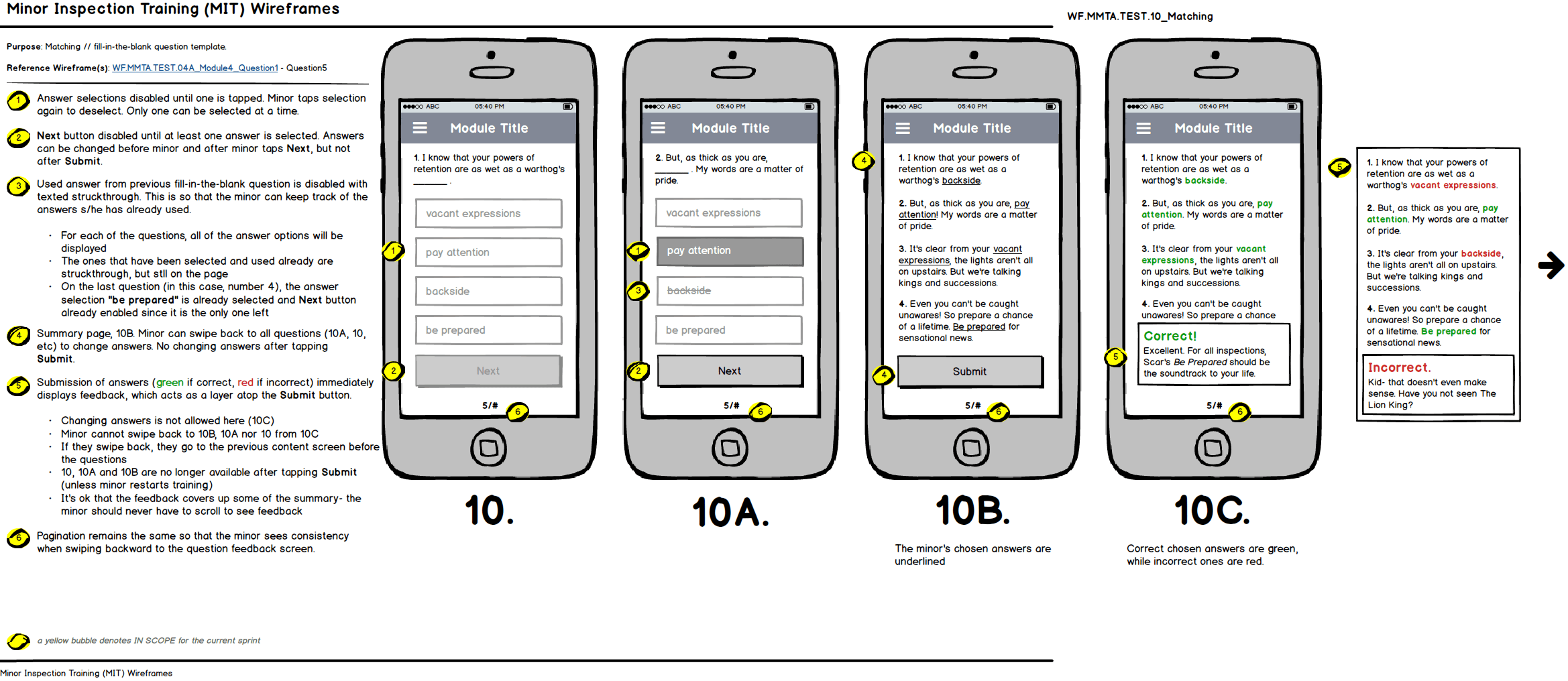BRIEF
Curbing Youth Smoking
The Family Smoking Prevention and Tobacco Control Act was signed into law by President Obama on June 22, 2009. It allows the government to regulate tobacco products. The MIT app is an internal mobile application designed and developed for the Food and Drug Administration's Center for Tobacco Products. The purpose of the MIT app is to train minors in helping federal and state inspectors check tobacco retailers' compliance with federal law.
Outline
- Timeline
January 2016 – August 2016 - Employer
Publicis Sapient / Arlington, VA - Client
Food and Drug Administration
Responsibilities / Tools
- Mobile Wireframes / Balsamiq Mockups 3
- Content Writing / Client Presentations & Feedback
- QA Testing / An Array of iPhone Models
WIREFRAMES



01 / Mobile Only
All inspections are performed out in the field or en-route, strictly on FDA-issued iPhones. These sites include any retailers of tobacco, such as convenience stores and vape shops.

02 / Content Source
The MIT app started as a PDF document that minors would study and be tested on. We converted this to a mobile app with learning modules and a scored exam that would be synced to the inspector system.

03 / Content Clarity
Only minors who passed the training could perform inspections. Therefore, it was paramount that the content was written in a clear and concise manner without bombast or grammatical errors.
CONTENT TEMPLATES

Staying within legal constraints, the original content was carefully reworked to consolidate as much of it as possible. The wireframes were heavily annotated to explain functionality to the client and our developers.
The training was separated into sequential learning modules. The minors could see their progress using the hamburger menu, and also pause their training to be resumed later.
For the required exam at the end of the learning modules, I created a suite of templates for every question type that best fit the original evaluation. These ranged from simple true // false questions to more difficult multi-select and matching questions. Questions were randomized with each trainee, while their performance was scored within the app at the end of the questionnaire.
QUESTION TYPE: True / False

QUESTION TYPE: Radio

QUESTION TYPE: Multi-select

QUESTION TYPE: Matching

SCORING

Whether the minor passed or not, the score had to be synced to the inspector system. Non-passing scores were synced so that missed questions could be analyzed for possible patterns if other trainees got the wrong answer. This would flag those questions to be re-written, or flag the corresponding content for analysis.
SYNCING SCORES



